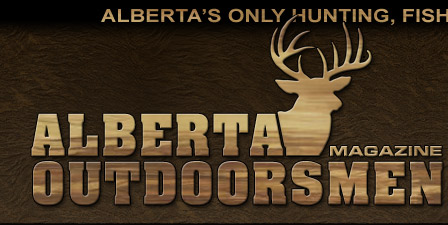|
 |
 |
Negative publicity surrounding the use of snares has been plaguing Alberta’s trappers in recent months. Newspapers, radio stations and social media outlets have all been in on the action, with most citing the ramblings of an old man far left behind the times, both in his knowledge of present-day trapping equipment and in his knowledge of the techniques used by today’s modern trapper.
His claim is that snares are not humane, that they kill indiscriminately, including pets, and that trappers leave thousands of these devices in the bush, even after trapping seasons are over, and that as many as 200 snares are set around a single draw bait. He also suggests that trapping is just a recreational pursuit.
A wise old trapper once told me, “A teary-eyed seal and a three-legged dog will win out every time.” And the media eats this stuff up; after all, stories with dramatic content and shocking photos sell. Unfortunately, all too often these stories are seldom accurate, generally offer up only one side, and the photos used are questionable. CBC is well known for this approach.
Let’s look at some of his claims, with the biggest one being that snares are not humane.
 |
| The author skinning a snare-caught lynx. |
Snaring has come a long way since I first began trapping 20 years ago, when all that was used was a short cable and a locking device. Since then, many snare modifications have been developed, some from trappers right here in Alberta, including the use of longer cables, swivels, breakaways and preloaded springs, unheard of devices 20 years ago.
Trappers are also taught different techniques for setting their snares to help make humane catches and how to avoid accidental catches. This is part of the mandatory trapper education course every trapper must pass before he or she is issued a licence by the province.
Just as trappers have been the leaders in humane snare developments, they are also lobbying to have these new developments made mandatory in Alberta, because they work! Trappers want their equipment to harvest animals in the most humane way possible—they are not cold-hearted killers that take pleasure in an animal’s suffering as some might suggest.
However, on occasion, something can go regrettably wrong, but it isn’t nearly as often as being suggested to the media.
Do hunters always make that perfect bullet or arrow placement? The answer to that question is obviously no. Do they feel sorrow for the animal when this happens? Of course they do. Should we take away their guns and bows because of this? Of course not. Trappers and hunters are people too. They have emotions, a deep love and respect for the animals they pursue, and do everything possible to ensure there is no suffering. If there is a more humane way to catch an animal, trappers will be the first to embrace it; in fact, I would bet it would be invented by a trapper.
As for incidental catches of a pet dog, a rare occurrence but one that can occasionally happen: why is it the dog owner’s fault when a car hits an “at large” dog, but it is the trapper’s fault when an “at large” dog is caught in a trap or snare? Can somebody answer that for me, because I’m having a real tough time with it?
“Saturation snaring” is a term used when many snares (up to 200 in this claim) are set around a draw bait. However, it is not a term used in trapper education courses. I have run many draw baits over the years and find it ludicrous to think that somebody would or could set up 200 snares around a draw bait. Just where would you put them all? And, how would you later find them? This one is just plain nonsense, exaggerated to feed the media.
As for trappers leaving thousands of set snares in the bush year round... I’m not going to waste any more ink on this one than I already have.
And this year, when I do my taxes, by law, I have to claim any income I made from trapping. Trapping is a business, not a recreational pursuit.
To take away a trapper’s snares would ensure that counties would be providing far more toxicants to producers than what is currently being offered. Like it or not, predators need to be controlled and if poison is the only available tool, it will be used.
Wildlife must be monitored and managed for the benefit of everybody, and there simply are no better alternatives to traps and snares. Anti-trapping individuals, groups, and the media only portray the worst possible scenarios, not the multitude of benefits that trapping brings to the public, and to wildlife itself. ■
For previous Outdoor Pursuits click here.
|
|
|
|


